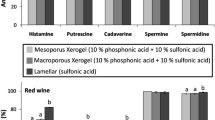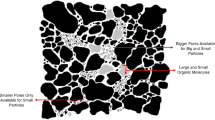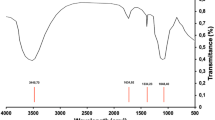Abstract
IN a recent paper by Lovelock1, the hæmolysis of suspensions of washed human red cells by alumina has been described. The conclusion is drawn from this work that alumina adsorbs dissolved lipids, derived from the erythrocyte membrane, thus hastening the process whereby lipids pass from the cell membrane into (aqueous) solution, leading to the breakdown of the cell.
This is a preview of subscription content, access via your institution
Access options
Subscribe to this journal
Receive 51 print issues and online access
$199.00 per year
only $3.90 per issue
Buy this article
- Purchase on Springer Link
- Instant access to full article PDF
Prices may be subject to local taxes which are calculated during checkout
Similar content being viewed by others
References
Lovelock, J. E., Biochem. J., 60, 692, (1955).
Johns-Manville Corp., U.S.A.
Author information
Authors and Affiliations
Rights and permissions
About this article
Cite this article
BROWN, E. Adsorption of Red-Cell Components by Siliceous Earths. Nature 178, 361–362 (1956). https://doi.org/10.1038/178361a0
Issue Date:
DOI: https://doi.org/10.1038/178361a0
Comments
By submitting a comment you agree to abide by our Terms and Community Guidelines. If you find something abusive or that does not comply with our terms or guidelines please flag it as inappropriate.



